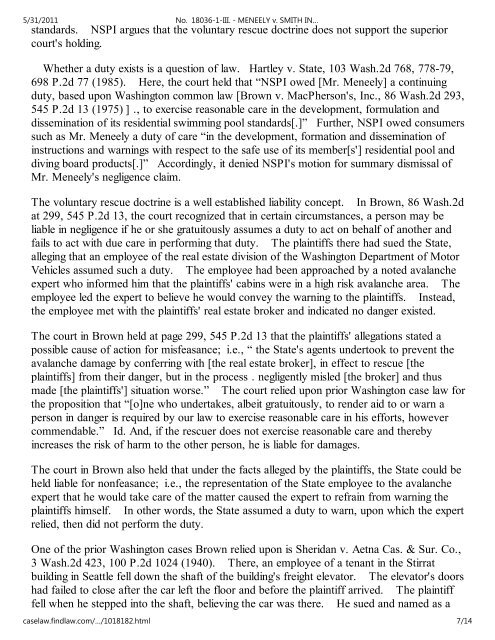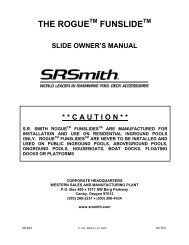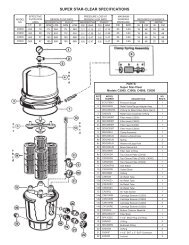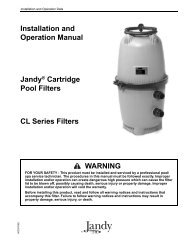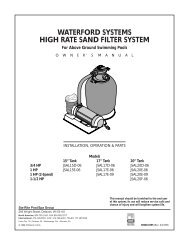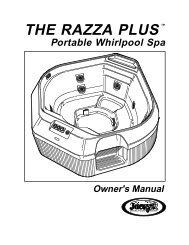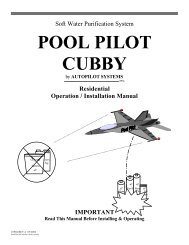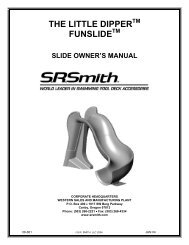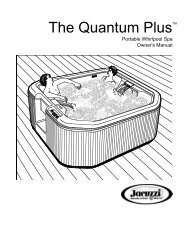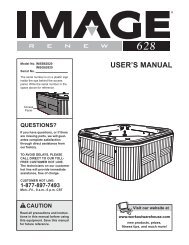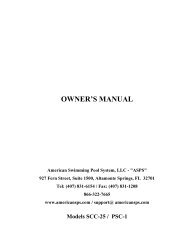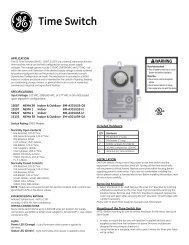Meneely v Smith - Rick English - Swimming Pool Consultant
Meneely v Smith - Rick English - Swimming Pool Consultant
Meneely v Smith - Rick English - Swimming Pool Consultant
Create successful ePaper yourself
Turn your PDF publications into a flip-book with our unique Google optimized e-Paper software.
5/31/2011 No. 18036-1-III. - MENEELY v. SMITH IN…standards. NSPI argues that the voluntary rescue doctrine does not support the superiorcourt's holding.Whether a duty exists is a question of law. Hartley v. State, 103 Wash.2d 768, 778-79,698 P.2d 77 (1985). Here, the court held that “NSPI owed [Mr. <strong>Meneely</strong>] a continuingduty, based upon Washington common law [Brown v. MacPherson's, Inc., 86 Wash.2d 293,545 P.2d 13 (1975) ] ․, to exercise reasonable care in the development, formulation anddissemination of its residential swimming pool standards[.]” Further, NSPI owed consumerssuch as Mr. <strong>Meneely</strong> a duty of care “in the development, formation and dissemination ofinstructions and warnings with respect to the safe use of its member[s'] residential pool anddiving board products[.]” Accordingly, it denied NSPI's motion for summary dismissal ofMr. <strong>Meneely</strong>'s negligence claim.The voluntary rescue doctrine is a well established liability concept. In Brown, 86 Wash.2dat 299, 545 P.2d 13, the court recognized that in certain circumstances, a person may beliable in negligence if he or she gratuitously assumes a duty to act on behalf of another andfails to act with due care in performing that duty. The plaintiffs there had sued the State,alleging that an employee of the real estate division of the Washington Department of MotorVehicles assumed such a duty. The employee had been approached by a noted avalancheexpert who informed him that the plaintiffs' cabins were in a high risk avalanche area. Theemployee led the expert to believe he would convey the warning to the plaintiffs. Instead,the employee met with the plaintiffs' real estate broker and indicated no danger existed.The court in Brown held at page 299, 545 P.2d 13 that the plaintiffs' allegations stated apossible cause of action for misfeasance; i.e., “ the State's agents undertook to prevent theavalanche damage by conferring with [the real estate broker], in effect to rescue [theplaintiffs] from their danger, but in the process ․ negligently misled [the broker] and thusmade [the plaintiffs'] situation worse.” The court relied upon prior Washington case law forthe proposition that “[o]ne who undertakes, albeit gratuitously, to render aid to or warn aperson in danger is required by our law to exercise reasonable care in his efforts, howevercommendable.” Id. And, if the rescuer does not exercise reasonable care and therebyincreases the risk of harm to the other person, he is liable for damages.The court in Brown also held that under the facts alleged by the plaintiffs, the State could beheld liable for nonfeasance; i.e., the representation of the State employee to the avalancheexpert that he would take care of the matter caused the expert to refrain from warning theplaintiffs himself. In other words, the State assumed a duty to warn, upon which the expertrelied, then did not perform the duty.One of the prior Washington cases Brown relied upon is Sheridan v. Aetna Cas. & Sur. Co.,3 Wash.2d 423, 100 P.2d 1024 (1940). There, an employee of a tenant in the Stirratbuilding in Seattle fell down the shaft of the building's freight elevator. The elevator's doorshad failed to close after the car left the floor and before the plaintiff arrived. The plaintifffell when he stepped into the shaft, believing the car was there. He sued and named as acaselaw.findlaw.com/…/1018182.html 7/14


